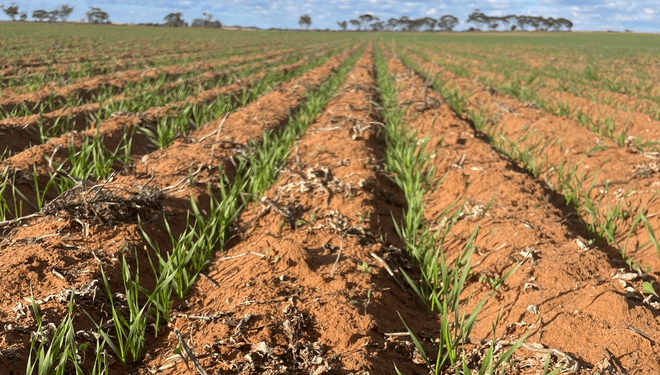Grazier Demand Lifts Feedgrain Prices in South-Eastern Australia
As global markets react to the abundant Northern Hemisphere harvest, feedgrain values in south-eastern Australia are bolstered by strong demand from graziers. This surge is particularly evident in South Australia’s South East and Victoria’s Western District, where hay, pulses, and grain are being procured over an increasingly wide area.
In northern New South Wales and southern Queensland, ideal growing conditions have fostered optimism among consumers about the upcoming new-crop, expected to enter the market in significant volumes from October.
Table 1: Indicative prices in Australian dollars per tonne.

North Trades Sideways
Excellent rainfall in parts of Central Queensland has significantly improved production prospects in the northern region. In the past 24 hours, notable rainfall measurements include Capella with 48mm, Clermont with 55mm, and Emerald with 36mm. Additionally, much of southern Queensland and northern New South Wales is forecast to receive over 10mm of rain in the coming week, following a period of frosty mornings.
Despite these favorable conditions, cash bids for both current and new crops have dropped considerably in recent weeks, leading to a cautious market. Growers are reluctant to commit to new-crop sales at present levels, with chickpeas expected to be a major focus for quick cash generation. AgVantage broker Brendon Warnock from Narrabri noted that recent market dynamics, particularly in the overseas wheat market, have tempered the previously rising trend observed until the end of May.
Global and Local Market Dynamics
The global wheat market remains influenced by several factors. Potential bullish elements include lower-than-expected Russian wheat exports and substantial Indian wheat imports. However, bearish influences from the Northern Hemisphere’s abundant harvest and thriving local crops are leading buyers to lower their bids, creating hesitation among growers to commit to sales. This situation is causing some consumers difficulties in completing their buying for the upcoming quarter, as there are still volumes that need to be secured.
Grazier Activity in the South
In the southern regions, the market this week has been shaped by two primary influences: the global decline in wheat prices and increasing demand for barley from graziers. This demand is concentrated in Victoria’s Western District and South Australia’s South East, where sheep producers are seeking barley and corn from regions such as the Wimmera, Mallee, and south-west NSW.
Peters Commodities trader Peter Gerhardy from Wagga Wagga highlighted significant “farmer-to-farmer trade,” particularly as livestock producers look to supplement limited paddock feed with grain. Corn, trading at around $330-$340 per tonne on farms near the NSW-Vic border, is especially sought after by graziers needing to feed lambing ewes. Barley from the Wimmera is also in demand among graziers who typically rely on pastures that are currently insufficient due to the cold weather.
More showers are forecast for NSW, Vic, and SA, which will help winter crops but may not sufficiently support pasture growth. The combination of frosty conditions and insufficient rainfall is leading to what is described as a “green drought,” where there is some growth in non-cropped paddocks, but not enough to sustain livestock.
Conclusion
The ongoing global harvest and favorable local growing conditions are shaping the feedgrain market in southern Australia, with strong grazier demand playing a crucial role in supporting prices. As the season progresses, the interplay between global market dynamics and local weather conditions will continue to influence the market, with graziers actively seeking feed options to sustain their livestock through the winter months.





